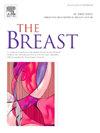整合基因多态性和临床数据开发乳腺癌放射治疗中皮肤毒性的预测模型
IF 7.9
2区 医学
Q1 OBSTETRICS & GYNECOLOGY
引用次数: 0
摘要
我们的目的是建立和验证乳腺癌(BC)患者接受放射治疗(RT)的急性和晚期皮肤毒性的预测模型。模型结合了遗传谱-包括非编码rna中的候选单核苷酸多态性(snp)和先前报道的毒性相关变异-结合临床变量。方法本研究纳入了1979例BC患者,在多中心研究中随访2 - 8年。我们使用logistic回归和Cox比例风险模型评估了急性(水肿/红斑)和晚期(萎缩/纤维化)毒性。该队列被分为训练和验证数据集。结果在训练或验证队列中,6个snp被证明是急性毒性(rs13116075、rs12565978、rs72550778和rs7284767)和晚期毒性(rs16837908和rs61764370)的预测因子。然而,在两个分析阶段中,这些snp都没有一致地与毒性相关。rs13116075、rs12565978和rs16837908先前被报道与RT毒性相关。在验证阶段,基于snp的模型的预测能力有限,急性毒性和晚期毒性的AUC值分别为0.49和0.54。单独纳入临床变量或与snp结合的模型在急性和晚期毒性方面分别获得了相似的AUC和c-指数值,分别为0.60。然而,在训练和验证队列中,联合模型对急性和晚期毒性的预测准确性最高。结论我们的研究结果强调了将临床数据与遗传标记相结合的重要性,以提高预测BC中RT毒性模型的准确性。本文章由计算机程序翻译,如有差异,请以英文原文为准。
Integrating genetic polymorphisms and clinical data to develop predictive models for skin toxicity in breast cancer radiation therapy
Background
We aim to develop and validate predictive models for acute and late skin toxicity in breast cancer (BC) patients undergoing radiation therapy (RT). Models incorporate a genetic profile—comprising candidate single nucleotide polymorphisms (SNPs) in non-coding RNAs and previously reported toxicity-associated variants—combined with clinical variables.
Methods
The study involved 1979 BC patients monitored for two to eight years post-RT in a multi-centre study. We assessed acute (oedema/erythema) and late (atrophy/fibrosis) toxicity using logistic regression and Cox proportional hazards models. The cohort was divided into training and validation datasets.
Results
Six SNPs demonstrated to be predictors of acute (rs13116075, rs12565978, rs72550778 and rs7284767) and late toxicity (rs16837908 and rs61764370) either in the training or validation cohort. However, none of these SNPs were consistently associated with toxicity across both stages of analysis. The rs13116075, rs12565978 and rs16837908 were previously reported to be associated with RT toxicity. In the validation phase, SNP-based models showed limited predictive ability, with AUC values of 0.49 and c-index of 0.54 for acute and late toxicity, respectively. Models incorporating either clinical variables alone or in combination with SNPs achieved similar AUC and c-index values of ∼0.60 for acute and late toxicity, respectively. However, the combined model exhibited the highest predictive accuracy for acute and late toxicity, both in the training and the validation cohorts.
Conclusions
Our findings highlight the importance of combining clinical data with genetic markers to enhance the accuracy of models predicting RT toxicity in BC.
求助全文
通过发布文献求助,成功后即可免费获取论文全文。
去求助
来源期刊

Breast
医学-妇产科学
CiteScore
8.70
自引率
2.60%
发文量
165
审稿时长
59 days
期刊介绍:
The Breast is an international, multidisciplinary journal for researchers and clinicians, which focuses on translational and clinical research for the advancement of breast cancer prevention, diagnosis and treatment of all stages.
 求助内容:
求助内容: 应助结果提醒方式:
应助结果提醒方式:


